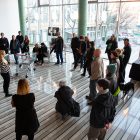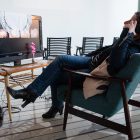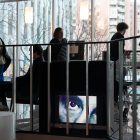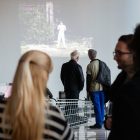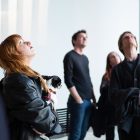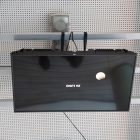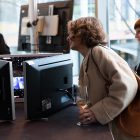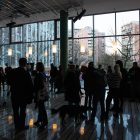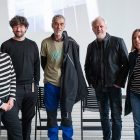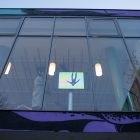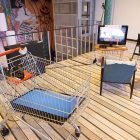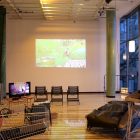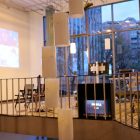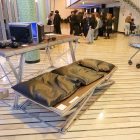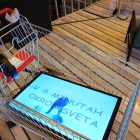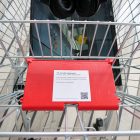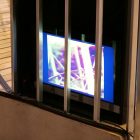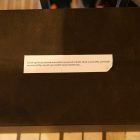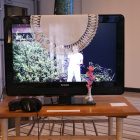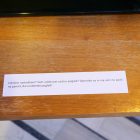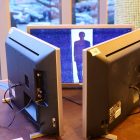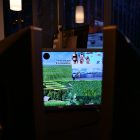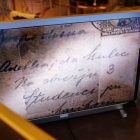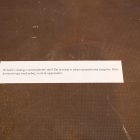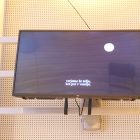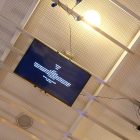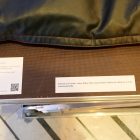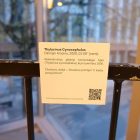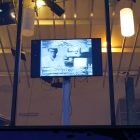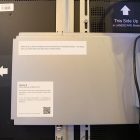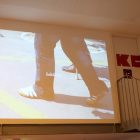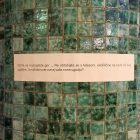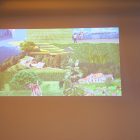Group exhibition
3 – 18 April 2023
Kino Šiška, Kamera Gallery, Trg prekomorskih brigad 3, Ljubljana
Opening: Monday, 3 April 2023, 7 pm
Artists: Nika Autor, Sara Bezovšek, Ana Čigon, Jasna Hribernik, Marko A. Kovačič, Damijan Kracina, Andrej Lupinc, Kolja Saksida, Rok Sieberer – Kuri, Miha Vipotnik
Curator: Varja Močnik
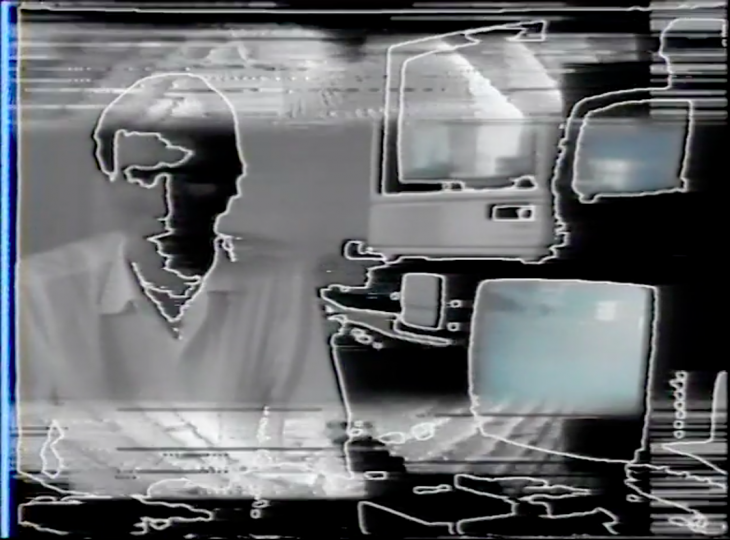
History teaches that experimental film is intended only for a narrow circle of the public. Is the (difficult) accessibility of this type of content an issue of physical display spaces or curation environments? Perhaps of limited and at the same time overcrowded spiritual contexts? Such questions will only be deepened by the exhibition of experimental audiovisual works by Slovenian authors. And multiplied.
The history of screening (and the accessibility) of Slovenian experimental film and video is the subject of consideration for the planning of an exhibition whose “natural” environment would be a movie theatre or a similar (darkened, focused on one screen) space, a television set or an individual screen/monitor placed within a contextualized space. The group exhibition of experimental audiovisual works by Slovenian masters in spaces that were not originally considered or intended for exhibiting such works (such as the Kamera Gallery) means a new context for the works (placed in the new space so that they impact each other and interact with each other) and a new context for the space, as well as an opportunity to address questions about the accessibility of these works to the public. The exhibition will deal with the question of the accessibility of these works in physical presentation spaces, with the sub-question of how mental spaces complement physical ones. Throughout history, experimental film and video often represent content intended for a narrow part of the interested public. Are experimental works inaccessible to the public also due to the nature of their inherent essence – that is, perhaps a “non-communicative” experiment for the general public? The purpose of this kind of questioning is not to relativise the issues of “physical accessibility” of content for different, especially vulnerable, audience groups, but rather to establish a connection between physical and cognitive access to content.
Dela na razstavi
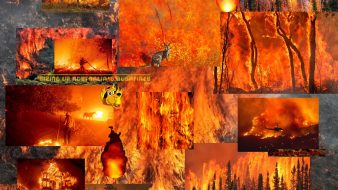
2021, 13’39’’
» video
A screen recording of the webpage www.s-n-d.si. Sara Bezovšek was drawn to various apocalyptic scenarios that could lead to the end of the world as we know it. She collaged visual material, found online in the form of short videos, memes, photographs, gifs, emoticons and various external links, with her own works, thereby creating a complex and visually saturated narrative that follows typical Hollywood film premises, and takes the viewer from an idyllic situation to scenes of natural catastrophes, global pandemics, alien invasions, nuclear explosions, meteorite collisions and other terrifying situations.
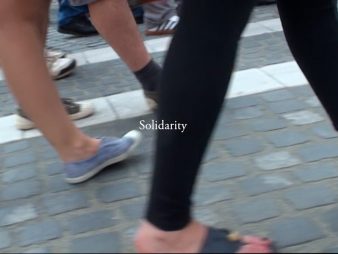
2012, 5’4’’
» video
The film is a reshot of the 1973 movie Solidarity by Joyce Wieland. It documents workers’ protests in Ljubljana. It raises questions such as: what is solidarity today, who is showing solidarity, with whom and when? The reshot of the movie was motivated by a current situation of mass unemployment, horrifyingly exploitative work conditions, ever more exploitative restructurations of the labour market when the question of solidarity is undermined by structures of domination.
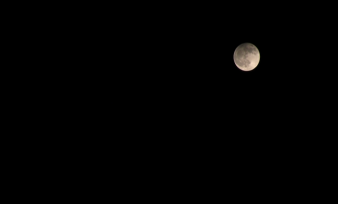
2015, 1’15’’
» video
The video is a short feminist comment on astronomical obstacles blocking the way towards gender equality.
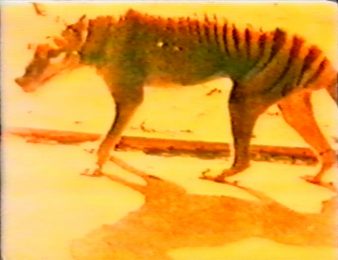
2000, 1’9’’
» video
The video reconstructs the movements of the Tasmanian tiger (Thylacinus cynocephalus), which became extinct in 1936. A year before the video was created, the Australian Museum in Sydney began developing methods for preserving the genetic material of the animal in order to clone it in the 21st century, when appropriate technological procedures become available.
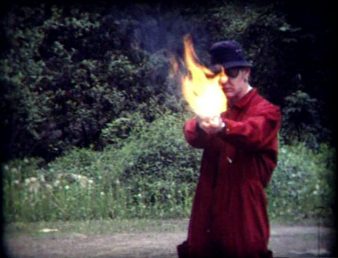
1999, 9’31’’
» video
A chance encounter between two expert jugglers and a pyromaniac that takes place around a semi-destroyed factory in Jesenice area.
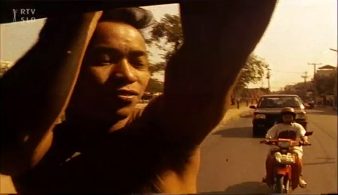
1990-2000, 9’38’’
» video
The documentary video patchwork with shots from various places in the world that the author visited while working as a cameraman at Slovenian national TV station in the span of ten years. Diversity of aesthetics is visible through a compilation of shots from different continents. A stable rhythm that runs through the whole video unifies all different scenes and brakes the seeming symbolic differences. The video would work as an ideal visualisation of Levi-Strauss’s anthropological theory developed in his book Race and History. Featured song by Slovenian rock band Buldožer ‘Svaki čovjek ima svoj blues’ (Every man has his own blues) works on a global level and concerns different cultural group and stops being a critique immanent exclusively to western society.
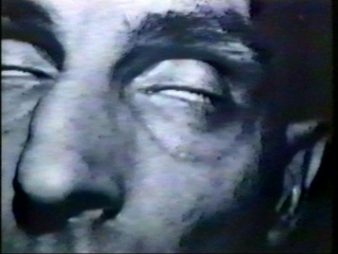
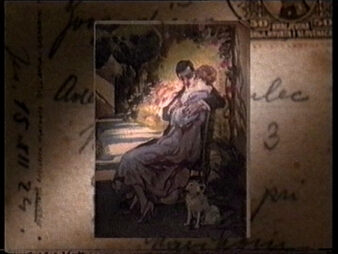
1997, 6’32’’
» video
By layering of pictures the artist succeded in simultaneously presenting the past and the present. Destruction of a house represents the present, and fragments from letters written by people who used to live in the house represent the past. An off-screen voice reads the letters, but the sounds soon become unintelligible – for who gives us the right to rummage through the intimacies of these anonymous people? Anonymous they shall remain. For a moment we even see their faces in photographs, but these photographs are something we have yet to become: history.
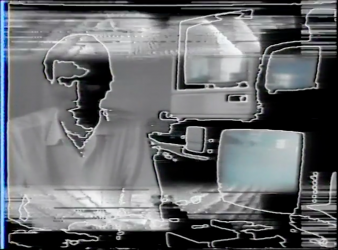
1986, 1’53’’
» video
In his video work the author gives an ironic statement about the state of home video production of that time and its integration in television programme (recorded for Petak u 22. TV Belgrade show in 1984). In the beginning the artist is sitting in a studio in a manner of TV broadcast presenters. His statement continues in an off over a montage of segments of one of his older video works Space shot in black and white. The montage is edited with added chroma key. Video was shown as part of Avtovizija (1986), the first show about author video on public television.
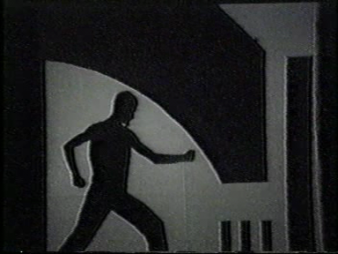
1983, 15’35’’
» video
The video was made on a basis of an eponymous performance from 1983 by Marko Kovačič. in which the author combines elements of sculpture, space, geometry, physicality, action, and music. With specific movement, contructivistically designed sets projected onto a screen, and the present video installation the artist creates unclear boundaries between reality and the construct of space, time and body. The artist applies his body to projections in the background and creates static and moving images. The video is accompanied by experimental music.
Exhibition opening
Photo: Kaja Brezočnik/Kino Šiška archive
Exhibition view
Photo: SCCA-Ljubljana archive
Production: SCCA-Ljubljana/DIVA Station, Kino Šiška Centre for Urban Culture
Supported by: the Ministry of Culture of the Republic of Slovenia, the City of Ljubljana – Department for Culture
![]()
![]()
![]()
![]()
![]()


